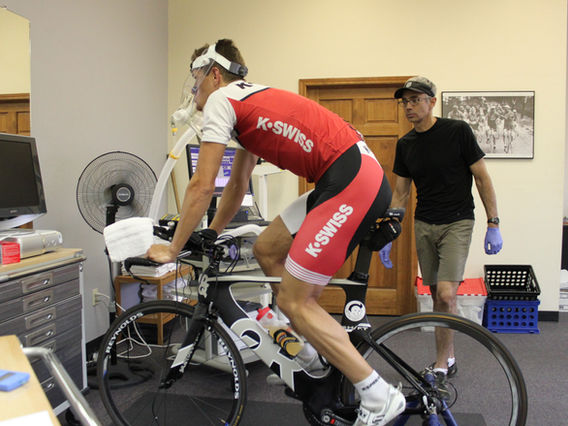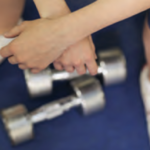V02 max, or maximal oxygen uptake, is a measure of a person’s aerobic fitness and their ability to use oxygen during exercise. It is determined by the amount of oxygen that the body can take in, transport, and use during exercise. There are several components that contribute to a person’s V02 max, including central and peripheral factors.
Central factors
- Cardiac output: This is the amount of blood that the heart pumps per minute. A higher cardiac output means that more oxygen is being delivered to the muscles.
- Arterial-venous oxygen difference: This is the difference in oxygen concentration between the oxygen-rich blood in the arteries and the oxygen-depleted blood in the veins. A larger difference means that more oxygen is being delivered to the muscles.
- Oxygen utilization: This is the efficiency with which the muscles use the oxygen that is delivered to them. The more efficiently the muscles use oxygen, the higher the V02 max.
- Lung capacity: This is the amount of air that the lungs can hold. A larger lung capacity means that more oxygen can be taken in during exercise.
Peripheral factors
“Peripheral” refers to the parts of the system concerned with oxygen diffusion and the oxidative capacity of the muscles themselves. This includes the capillaries (blood vessels to the muscle fibres) and the mitochondria within the muscle cells (the sites that produce energy aerobically).
There are several peripheral factors that can affect a person’s V02 max, including:
- Hemoglobin concentration: Hemoglobin is a protein in the red blood
cells that binds to oxygen and carries it to the muscles. A higher
hemoglobin concentration means that more oxygen is being delivered to
the muscles. - Capillary density: Capillaries are tiny blood vessels that deliver
oxygen and nutrients to the muscles. A higher capillary density means
that more oxygen is being delivered to the muscles. - Mitochondrial density: Mitochondria are the “powerhouses” of the
cells and are responsible for producing energy. A higher mitochondrial
density means that the muscles are more efficient at using oxygen to
produce energy. - Muscle fiber type: There are two types of muscle fibers: slow-twitch
(type I) and fast-twitch (type II). Slow-twitch fibers are more
efficient at using oxygen and are better suited for endurance
activities. Fast-twitch fibers are less efficient at using oxygen but
are better suited for short, high-intensity bursts of activity.
Improving any of these peripheral factors can help to increase a person’s V02 max. Engaging in regular endurance exercise, such as running, cycling, or swimming, and incorporating strength training and high-intensity interval training can help to improve hemoglobin concentration, capillary density, and mitochondrial density.
Here are a few tips on how to increase your V02 max:
- Engage in high-intensity interval training (HIIT): HIIT involves alternating periods of high-intensity exercise with periods of lower-intensity exercise. This type of training has been shown to be effective in increasing V02 max, especially when combined with endurance training.
- Incorporate endurance training (<LT1, zone 2): Engaging in regular endurance exercise, such as running, cycling, or swimming, can help to improve your V02 max. It is important to gradually increase the intensity and duration of your endurance workouts as your fitness improves.
- Train at altitude: Training at high altitudes can help to increase your V02 max as your body adapts to the lower levels of oxygen in the air.
- Use a heart rate monitor: Monitoring your heart rate during exercise can help you ensure that you are training at the right intensity to improve your V02 max. Aim to train at or near your maximal heart rate, which is typically around 90% of your maximum heart rate.
- Incorporate strength training: In addition to endurance training, incorporating strength training (weights) into your routine can also help to increase your V02 max. Stronger muscles are more efficient at using oxygen, which can improve your overall aerobic fitness.



